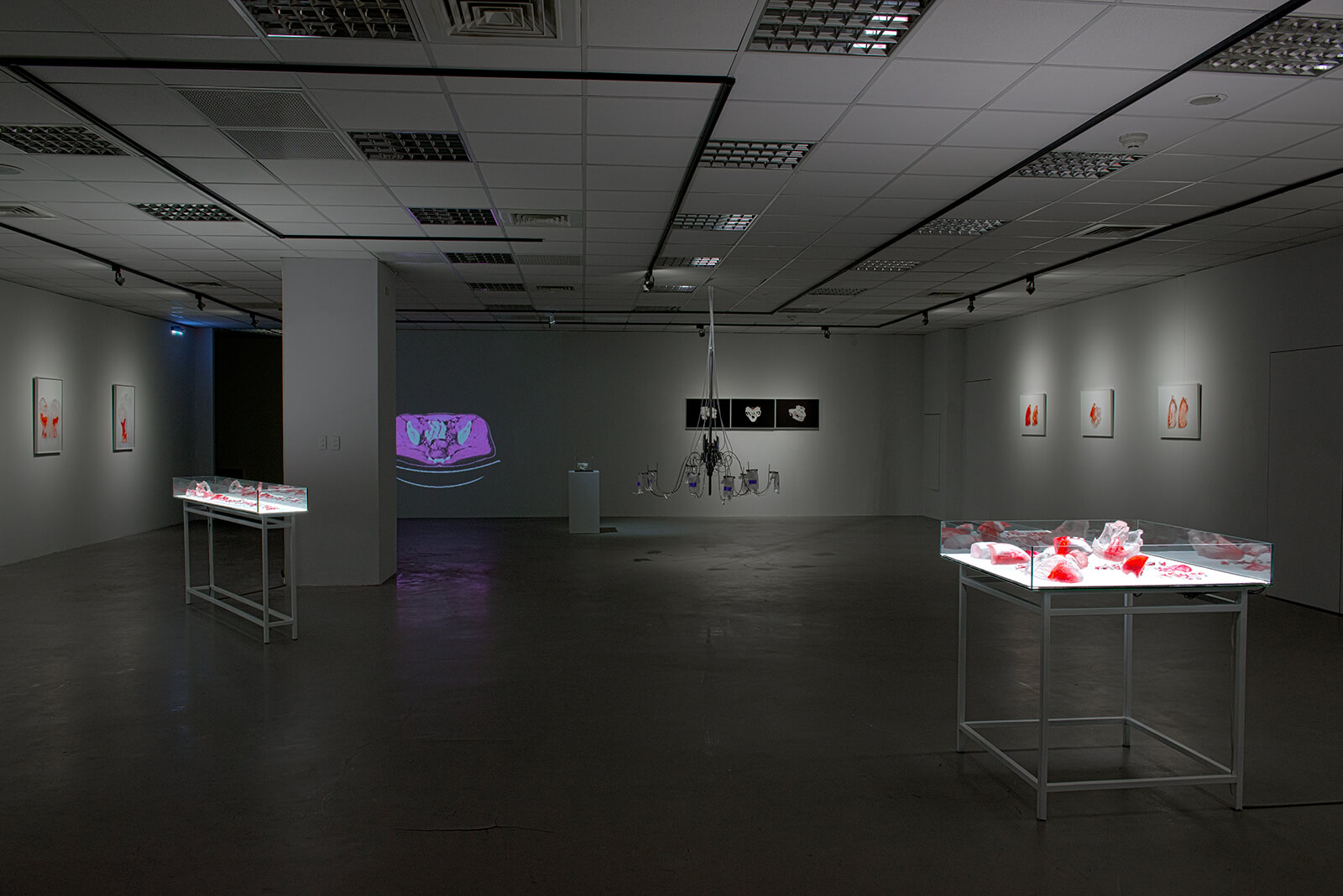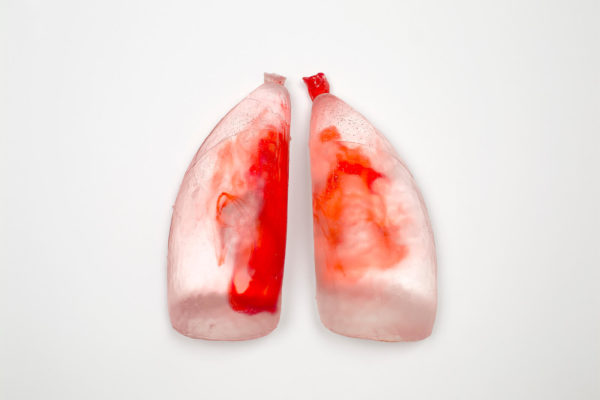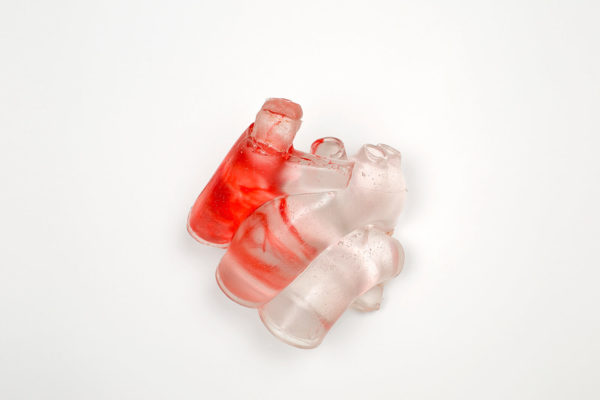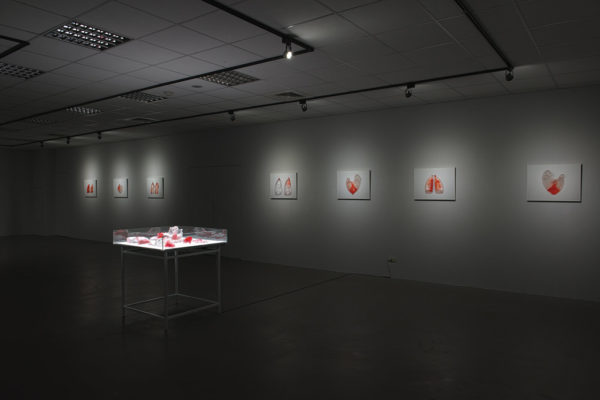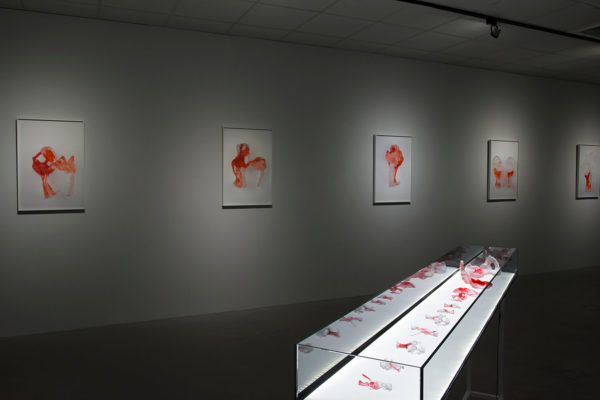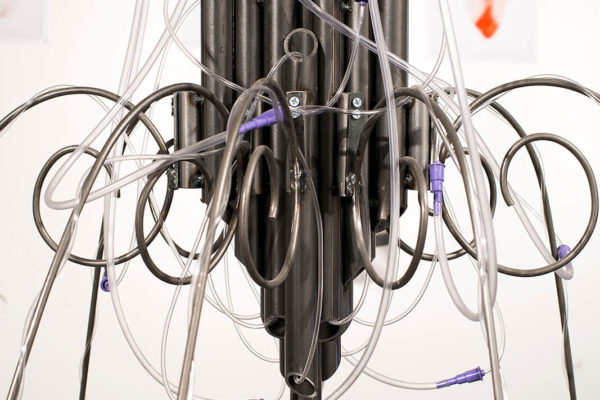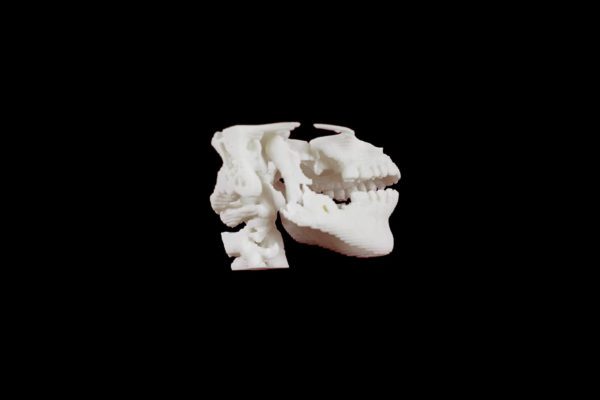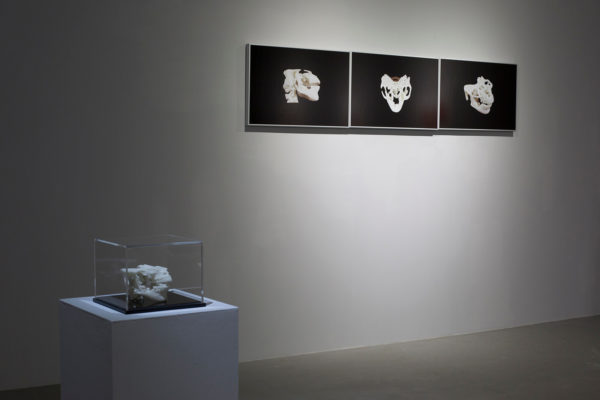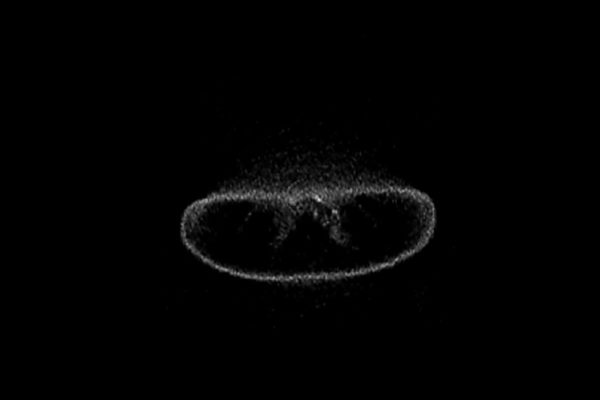Series: The Archival Body
Exhibition Title: The Archival Body
Location: Archetype Factory, Taipei, Taiwan/ Exhibition&Convention Center, Daegu, South Korea
Date: April, 2015/ November, 2017
Medium: installation | resin casts, digital prints, video, 3-D printed plastic sculpture, glass, LED light panels, steel, feeding bags, timer, air pump, PVC tubing, acrylic case
Dimension: variable
The Archival Body is a series of modular works that include sculptures, photographs, and videos exploring the fragility of human beings in the face of disease and modern medicine and how these change our physical perception with regard to our own bodies. By making life-sized monuments, I tried to preserve and represent the physical parts that had been removed from or disabled for my late husband during his long battle with cancer.
While I am amazed by how medical technology is moving faster than we can imagine, I also have noticed that these exciting and revolutionary discoveries and solutions that have been presented by medical experts move as slowly as dropping water wears away a stone. We still cannot help but be affected by the increasing numbers of lives disappearing around us.
During 2014 and 2015, I created a series of sculptures made of resin, metal, 3-D printed plastic, and digital photographs of the sculptures themselves. I also included a video animated from CT scan images.
We Can See Them Gradually Dissolving and X-Ray: Collective Memory 001 comprise clear resin sculptures cast from various medical anatomy models and their photographs hung next to the sculptures in the exhibitions. Red-colored tints inside the casts symbolize suspicious entities that are either expanding or disappearing. When a patient’s life relies on the artificial controls of abnormal cells and a doctor’s X-ray reading, what we can use to endoscope and predict the future of lives is rather singular. I photographed the casts from a perspective much like that of a doctor re-examining them, to question decision-making through the human eye.
The Archival Body: Figure Study is a group of clear-resin miniature sculptures cast and modified from disassembled medical anatomy models of an inner ear. Similar to looking through a microscope, the photographs reveal a patient’s self-awareness due to his abnormal physical condition.
60 Grams Is Non Dose is a sculpture composed of metal pipes, rods, feeding bags, and air-pumping machinery. By combining the spiritual symbols of a chandelier and organ pipes with disposable medical supplies, I recomposed them into a sarcastic mechanical contraption. The juxtaposition represents a human being striving to survive through the use of oxygen tubes and feeding bags during treatments. This work implies that, under physical trauma, we all need to rely on the same medical process and medical equipment to maintain our lives, regardless of our financial or social status.
Preserving a Jaw is a 3-D plastic sculpture printed from the CT scan images of my late husband’s jaw before it was excised during his cancer treatments. The bone around his right lower jaw was dead and the skeleton was fractured due to multiple high doses and overlapping radiation therapies. My intention in preserving and representing the lost and damaged parts of a patient through technology is to provide the possibility of reconstructing those discontinued or removed body memories.
By connecting each CT scan into moving imagery, the segments of body images are reconstructed and colored into a new body-mapping animation entitled Unknown 3525. This is part of a project inspired by neuroscientist V.S. Ramachandran’s research on how our body is a map constructed by the brain to manage it more easily and how that makes the body image changeable in our minds.
This project was supported by the Ministry of Culture of Taiwan, the Cultural Affairs Bureau of Taichung, and Sculpture Space, Inc.

